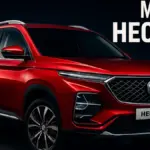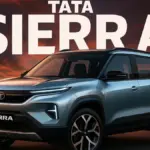Tesla has become synonymous with innovation, sustainability, and a bold reimagining of what automobiles—and energy systems—can be. From its trailblazing electric vehicles (EVs) to its ecosystem of clean energy solutions, Tesla has transformed the automotive and energy industries on a global scale. What began in 2003 as a startup aimed at building electric sports cars has now become one of the most valuable companies in the world, led by its charismatic CEO, Elon Musk.
The Rise of Tesla
Tesla’s first major milestone was the Tesla Roadster, released in 2008. It proved electric cars could be fast, stylish, and desirable. Building on that momentum, Tesla launched the Model S, a luxury electric sedan, in 2012. With an extended range and state-of-the-art tech, it set a new benchmark for electric vehicles.
Following the success of the Model S, Tesla introduced the Model X SUV, the more affordable Model 3, and the compact Model Y crossover—each expanding Tesla’s reach into broader consumer markets. The company’s mission, “to accelerate the world’s transition to sustainable energy,” was no longer just a vision—it was becoming reality.
Technological Superiority
What sets Tesla apart from competitors is its vertically integrated approach and technological leadership. Tesla designs and produces its own battery packs, electric drivetrains, and software, including the industry-leading Autopilot—an advanced driver-assistance system (ADAS).
Tesla’s cars receive over-the-air (OTA) software updates, meaning customers enjoy new features and improvements without visiting a dealership. This model keeps vehicles current and competitive for years after purchase.
The Tesla Gigafactories, located in Nevada, Texas, Shanghai, Berlin, and other regions, are instrumental in achieving scale and cost-efficiency. These facilities are designed not only for manufacturing but also for innovation in battery technology and sustainable production methods.
Energy Innovation
Beyond cars, Tesla’s commitment to sustainability includes a suite of energy solutions:
- Powerwall: A home battery system that stores solar energy.
- Powerpack and Megapack: For commercial and utility-scale energy storage.
- Solar Roof: A roofing system that turns sunlight into electricity.
These offerings integrate into Tesla’s ecosystem, enabling consumers to generate, store, and consume renewable energy efficiently.
Global Impact and Market Position
Tesla’s impact on the global auto market is profound. It forced traditional carmakers to take EVs seriously and invest billions in electric mobility. In markets like the U.S., Europe, and China, Tesla is often the best-selling EV brand. The Model 3 and Model Y regularly top global EV sales charts.
In 2024, Tesla also started focusing more on emerging markets and began to localize production to reduce costs and avoid supply chain constraints.
The Future of Tesla
Tesla’s roadmap includes ambitious projects:
- The Cybertruck, a futuristic electric pickup truck.
- The Tesla Semi, designed to revolutionize freight transport.
- Full Self-Driving (FSD) capabilities, aiming for a future of fully autonomous mobility.
- A rumored affordable EV model to broaden accessibility.
Additionally, Tesla is working on advancing AI, robotics (e.g., the Tesla Bot), and high-speed transportation (via Hyperloop concepts and partnerships).
Challenges and Criticism
Tesla is not without challenges. Concerns over Autopilot safety, regulatory scrutiny, labor practices, and supply chain dependencies have drawn criticism. Additionally, increasing competition from legacy automakers and new EV startups pressures Tesla to maintain its lead.
However, its loyal customer base, consistent innovation, and strong brand image keep it in a dominant position.
FAQs
Q1: Are Tesla cars fully autonomous?
No. Tesla cars have Autopilot and FSD features, but full autonomy has not yet been legally or technically achieved.
Q2: What is the range of a Tesla EV?
It varies by model. For example, the Model S Long Range offers over 400 miles on a single charge.
Q3: How long does it take to charge a Tesla?
Using Tesla’s Supercharger network, you can get up to 200 miles of range in about 15 minutes.
Q4: Is Tesla a good investment?
Tesla is considered a high-growth, high-volatility stock. While it has yielded high returns in the past, investment should be made with proper research.
Q5: Can Tesla energy products be used off-grid?
Yes. Tesla Powerwall and solar solutions can be used to create off-grid energy systems.
Conclusion
Tesla is not just a car company—it’s a transformative force across multiple sectors. By pushing the boundaries of electric mobility, renewable energy, and autonomous technology, Tesla continues to inspire the next generation of innovation. As the world moves towards a greener, more connected future, Tesla is likely to remain a key architect of that transformation.








